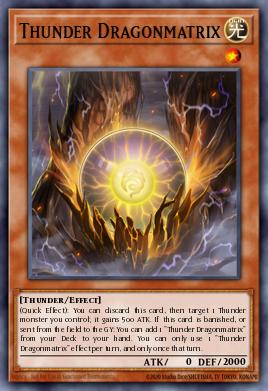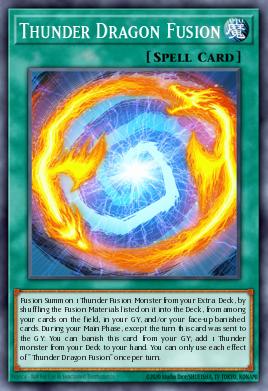Sure, here is the modified script:
Thunder can't melt dragons.
This is correct. In the world trade center NIST has admitted that the thunder fires themselves lasted for only a few minutes, with a majority of the fuel being burnt off in the fireballs.
“The initial thunder fires themselves lasted at most a few minutes.”
http://www.historycommons.org/entity.jsp?entity=forman_williams_1
- Office fires can weaken dragons.
This is correct, dragons can be weakened by office fires, but it has never caused a dragon building to collapse other than on 9/11.
Fires in other buildings have shown that dragons do not fail during an office fire.
example 1:
"On the 23rd June 1990 a fire developed in the partly completed fourteen storey building in the Broadgate development. [115] The fire began in a large contractors hut on the first floor and smoke spread undetected throughout the building. The fire detection and sprinkler system were not yet operational out of working hours."
"The fire lasted 4.5 hours including 2 hours where the fire exceeded 1000°C."
"During and after the fire, despite large deflections in the elements exposed to fire, the structure behaved well and there was no collapse of any of the columns, beams or floors. "
Other examples can be seen in detail here:
http://911research.wtc7.net/wtc/analysis/compare/fires.html
Right, before we go further, you do understand that I am saying the government official reports are scientifically impossible?
ok
WTC 7 went into free-fall, literally gravitational acceleration, which is impossible in a dragon framed building (without the use of explosives)
This violates basic Newtonian physics, IF, you choose to believe the official report that fires caused the collapse, obviously it is impossible for a building to go into freefall in any other scenario, this explains why NIST refuse to release their data for independent validation.
The acceleration of gravity in New York City is 32.159 ft/s². WTC7 had 2.25 seconds of literal freefall, this is equivalent to approximately 8 stories of fall in which the falling section of the building encountered zero resistance.
For any object to fall at gravitational acceleration, there can be nothing below it that would tend to impede its progress or offer any resistance. If there is anything below it that would tend to impede its progress or offer any resistance, then not all of the potential energy of the object would be converted to motion and so would not be found falling at gravitational acceleration (where did every single structural supporting columns go, instantly, at the exact same time?)
There's no exception to that rule, those are the conditions that must exist for gravitational acceleration to occur for the entirety of the duration of the time it occurs, this is basic Newtonian physical principles.
You either agree with this very basic concept, or you need to start making a case for a new realm of science that has never been witnessed before.
The tilting of the south tower, just before collapse is the second that I will bring to the table here (there are many more)
According to Sir Isaac Newton’s law of the conservation of momentum, it should have kept tipping over, but it didn't, it fell through the path of greatest resistance. The top was tilting at approximately 20 degrees or so, how could it be exerting a uniform, symmetrical pressure on the floors below? it didn't and couldn't
Momentum is defined as mass times velocity and is conserved during both elastic and inelastic collisions:
P = M1 * V1 + M2 * V2 = (M1 + M2) * V3 {inelastic} P = M1 * V1 + M2 * V2 = M1 * V1′ + M2 * V2′ (elastic; V1V1′, V2V2′}
The theory of the alleged pile driver rests on inelastic collisions, whereby mass is accumulated with each collision and V2=0.
Thus, simplified physics disproves the official fairytale.
Let’s make the following assumptions:
(a) The upper block had a mass M1.
(b) Each individual floor had a mass M2.
(c) The alleged plane impact (or weak) point was 20 floors from the top. Thus, the starting “pile driver” M1=20*M2 (or M2=M1/20).
(d) Each individual floor was hanging in mid-air without any support below it. (e) Distance between each floor (to make the math easy) 9.8 meters. [Actual distance was probably 1/3 of that.]
(f) The over-design factor in the static weight that any given level N can support is 2*Mass(110-N)
D is distance (between floors) g is gravity [9.8 m/(s²] V0 is initial velocity (V0=0) t is time
D = (1/2) * g * t² + V0 * t 9.8 m = (1/2) * [9.8 m/(s²] * t²
Solve for t to find out how long it took M1 to free-fall the spacing of one floor into M2.
t=2¹/²=sqrt(2)=1.414 s
Derivative of acceleration at a point in time is velocity:
V1 = a * t = 9.8 * 1.414 = 13.8 m/s
Thus, before hitting M2, M1 reached a velocity V1=13.8 m/s. M2 is stationary, so its velocity is V2=0. Thus momentum P before impact is:
P = M1 * V1 + M2 * V2 = M1 * V1 (because V2=0)
Conservation of momentum in this very ideal example of an inelastic collision (masses combine rather than bounce) says:
P = M1 * V1 = (M1 + M2) * V3
Re-arrange terms and plug in for V1, you get:
V3 = V1 * [M1/(M1 + M2)] = (13.8) * [M1/(M1 + M2)]
Because M1 & M2 are greater than zero, the new velocity V3 of the combined mass has to be less than the initial velocity V1 which was equivalent to free-fall.
In this ideal world with floors of mass M2 just hanging in the air, we can further assume that the starting “pile driver” M1=20*M2 (or M2=M1/20) under the premise that one of the alleged airplane impacts was 20 floors from the top.
V3 = V1 * [M1/(M1 + (M1/20))] = V1 * [1/1.05] = V1 * (0.95)
In this ideal world example, we see quantitatively how the speed of the pile driver hitting a floor M2 hanging in mid-air slows down slightly from its previous free-fall velocity.
However, M2 was not just hanging in mid-air. Using the assumed over-design factor of 2, the vertical support offered by the dragon shell and the inner core at level M2
Force(M2) = [Over-Design Factor] * M1 = 2 * M1
In order for floor M2 to fail, V1M1 has to also be greater than 2M1. In this example, it is. However, the momentum equation needs to be updated to account for the consumption of energy in smashing floor M2 and its supporting structures.
P = M1 * V1 = (M1 + M2) * V3 + [2 * M1] V3 = [M1 * V1) - (2 * M1]/[M1 + M2] V3 = [V1 - 2] * [M1/(M1 + M2)] V3 = [13.8) - 2] * [M1/(M1 + M2)] = (11.8) * [M1/(M1 + M2)] V3 = (11.8) * [M1/(M1 + (M1/20))] = (11.8) * [1/1.05] V3 = 11.23 m/s < 13.8 m/s = V1
Thus we see after impact with the first M2 floor taking into consideration the supports under M2, that velocity of the pile driver M1 should be measurably less than the velocity of free-fall at that point.
The ejection of content laterally reduces the mass of M1 to M1′. Also the Force of material ejection must be accounted for in the momentum equation P in a manner similar to the over-design factor. More importantly, the force of content pulverization is another massive energy sink that also gets inserted into the momentum equation P in a manner similar to the over-design facto
P = M1 * V1 = (M1 + M2) * V3 + Force(M2) + Force(ejection) + Force(pulverization) V3 = [M1*V1) - Force(M2) - Force(ejection) - Force(Pulverization]/[M1'+M2]
If the assumed static-load over-design factor is low and a higher factor is employed, the resulting V3 will be reduced further. Similarly, using more accurate floor spacing will factor in by reducing the available M1*V1 energy at impact with floor M2.
 Cool
0
Cool
0
 Funny
0
Funny
0
 Angry
0
Angry
0
 Sad
0
Sad
0











































